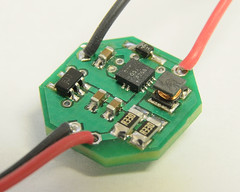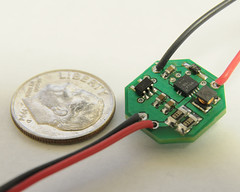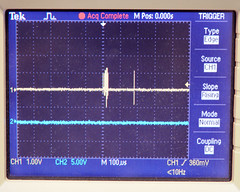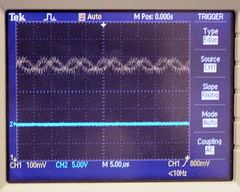jib77
0
- Joined
- Jun 19, 2010
- Messages
- 718
- Points
- 0
Pretty cool! Yeah, looks good once soldered, very good job there!
I thought you knew you were going to need really small value resistors! That's why I told you that the idea of using a potentiometer in paralel with the sense resistor woudn't work at all, as there are no pots with such low values. I only have 0.1ohm ones on hand right now, and I'm gonna need 5 of them in paralel for my TPS63020 based driver to be able to get some decent current. I can't wait for having more things to order to make another big online order with more proper resistors.
WILLING TO SEE THOSE O'SCOPE PICS!
Thanks ... it cleaned up pretty good:

For scale:

I knew they were going to be small, but not that small! I was thinking the gain was more like 3V not 20V(oooops). I ordered some 0.1Ω, 0.06Ω, and the last of the 0.075Ω current sense resistors. Here are the O-Scope pics ... but I forgot to scope the bench supply by itself to see how much of this is the supplies fault (cheap Chinese thing my boss bought in the Philippines):
Startup spikes mostly due to crappy supply switch:

Shutdown spikes, again due to supply switch:

Ripple:


Last edited:







